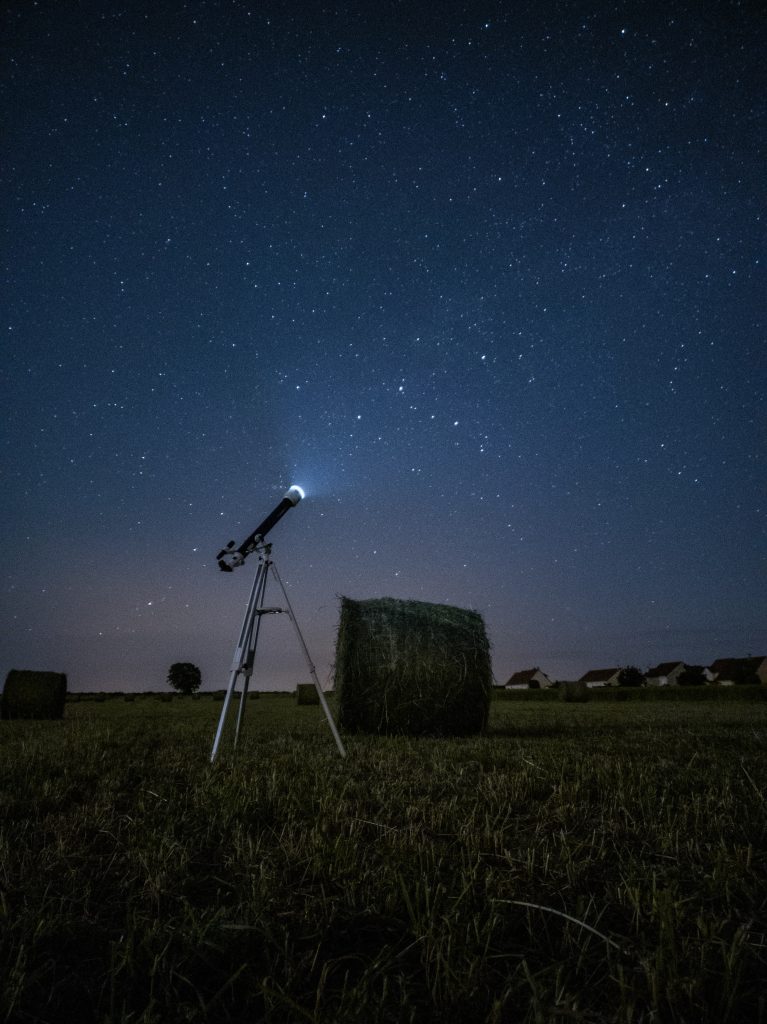Have you ever wondered about the difference between a Cassegrain and a Maksutov-Cassegrain telescope? Well, let me shed some light on this for you!
A Cassegrain telescope is a type of reflecting telescope that utilizes two mirrors to gather and focus light. It consists of a concave primary mirror at the back and a smaller convex secondary mirror near the front of the telescope. This design provides a compact and portable instrument with a long focal length, allowing for high magnification. On the other hand, a Maksutov-Cassegrain telescope is a variation of the Cassegrain design that incorporates a corrector lens at the front. This corrector lens, which is typically a meniscus-shaped lens with both concave and convex surfaces, corrects for spherical aberration and produces a sharper image. This type of telescope is known for its excellent image quality, compactness, and versatility. Both the Cassegrain and Maksutov-Cassegrain telescopes have their advantages and are widely used in amateur and professional astronomy, depending on specific needs and preferences.
Cassegrain Telescope
A Cassegrain telescope is a type of reflecting telescope that uses a combination of mirrors and lenses to gather and focus light. It was invented in the 17th century by French astronomer, Laurent Cassegrain. The design of a Cassegrain telescope consists of a concave primary mirror and a convex secondary mirror. The primary mirror is located at the back of the telescope and is responsible for collecting and reflecting light towards the secondary mirror, which is positioned at the front. The secondary mirror then directs the light out through a small hole in the center of the primary mirror, where it is captured by an eyepiece or camera.
Design and Components
The primary and secondary mirrors of a Cassegrain telescope are typically made of glass or other reflective materials. The primary mirror is usually larger in diameter than the secondary mirror, allowing it to gather a greater amount of light. The convex shape of the secondary mirror allows it to reflect the light back towards the primary mirror, where it is then reflected out of the telescope. The primary mirror is often parabolic in shape, which helps to ensure that incoming light rays are focused to a single point, resulting in sharper images.
In addition to the mirrors, a Cassegrain telescope also includes other essential components such as a sturdy tube to house the mirrors and an eyepiece or camera mount for observing or capturing images. The tube is typically made of aluminum or other lightweight materials to minimize the overall weight of the telescope. Some Cassegrain telescopes also include a motorized mount that allows for precise tracking of celestial objects, making it easier to photograph them or observe them for extended periods.
Optical Setup
The optical setup of a Cassegrain telescope involves the use of multiple mirrors to reflect and focus incoming light. As light enters the telescope, it first encounters the primary mirror, which reflects it towards the secondary mirror. The secondary mirror then reflects the light back towards the primary mirror, but at a smaller angle. This causes the light to converge towards the center of the primary mirror, where it exits the telescope through a small hole. To observe the focused light, an eyepiece or camera is positioned at the back of the telescope, where the light is collected and magnified.
Advantages
One of the main advantages of a Cassegrain telescope is its compact design. The use of mirrors allows for a relatively short tube length compared to other types of telescopes. This makes Cassegrain telescopes more portable and easier to transport to different observing locations. Additionally, the use of mirrors also eliminates the need for chromatic aberration correction, which can occur in refracting telescopes. This results in clearer and more detailed images, especially when observing objects with high contrast, such as the Moon or planets.
Another advantage of Cassegrain telescopes is their versatility. They can be used for both celestial and terrestrial observation, making them suitable for a wide range of applications. The secondary mirror can be easily adjusted to focus the telescope on objects at different distances, making it ideal for capturing terrestrial landscapes or wildlife. Furthermore, Cassegrain telescopes can be equipped with various accessories and upgrades, such as motorized mounts or astrophotography equipment, to enhance their capabilities and adapt them to specific needs.
Disadvantages
Despite their many advantages, Cassegrain telescopes have a few drawbacks to consider. Firstly, they tend to have a narrower field of view compared to other telescope designs. This means that, when observing large celestial objects or panoramic landscapes, a Cassegrain telescope may not capture the entire image in one view and may require multiple adjustments or a different type of telescope for a better experience.
Additionally, Cassegrain telescopes can be more expensive than other types of telescopes due to the complexity of their design and the quality of the mirrors required. The combination of mirrors and lenses can also introduce some light loss, resulting in slightly dimmer images compared to refracting telescopes. However, advancements in mirror coatings and optical materials have significantly reduced this issue in modern Cassegrain telescopes.

Maksutov-Cassegrain Telescope
A Maksutov-Cassegrain telescope, also known as a “Mak-Cass,” is a variation of the Cassegrain telescope design. It was developed in the 1940s by Russian optician Dmitry Maksutov. The Maksutov-Cassegrain telescope shares many similarities with the traditional Cassegrain telescope but incorporates a different type of corrector lens, known as a meniscus lens, into its design.
Design and Components
The primary mirror of a Maksutov-Cassegrain telescope is similar to that of a Cassegrain telescope – a parabolic concave mirror located at the back of the telescope. However, instead of a convex secondary mirror, a meniscus corrector lens is placed at the front of the telescope. This lens is a thick, convex-convex lens with both surfaces curved. Its purpose is to correct for spherical aberration caused by the primary mirror, ensuring that the Maksutov-Cassegrain produces high-quality images.
In addition to the primary mirror and meniscus lens, the rest of the components in a Maksutov-Cassegrain telescope are similar to those in a Cassegrain telescope. It includes a tube to house the mirrors and lens, an eyepiece or camera mount, and optional motorized mounts or accessories for advanced functionality.
Optical Setup
The overall optical setup of a Maksutov-Cassegrain telescope is similar to that of a Cassegrain telescope. Incoming light is first collected by the primary mirror, reflected towards the meniscus corrector lens, and finally directed towards the eyepiece or camera through a hole in the center of the primary mirror. The primary difference is the inclusion of the meniscus lens, which helps correct for spherical aberration and produces a sharper, higher contrast image compared to a standard Cassegrain telescope.
Advantages
One of the key advantages of a Maksutov-Cassegrain telescope is its compactness and portability, much like the traditional Cassegrain telescope. The addition of the meniscus corrector lens allows for a longer focal length in a shorter tube, resulting in a more compact telescope. This makes the Maksutov-Cassegrain telescope easier to transport and set up, especially for astronomers or astrophotographers who frequently travel to different observation sites.
Another advantage of the Maksutov-Cassegrain design is its excellent optical performance. The meniscus corrector lens helps eliminate spherical aberration, making the telescope produce crisp and clear images. This makes it particularly well-suited for observing the Moon, planets, and other celestial objects that require high-resolution details. The compact design also reduces the effects of thermal expansion, allowing for quicker stabilization of the telescope’s optics, resulting in improved image quality.
Disadvantages
Despite its many advantages, the Maksutov-Cassegrain telescope has some limitations worth considering. One of the main drawbacks is its relatively narrow field of view, similar to the traditional Cassegrain telescope. This could be restricting when observing larger celestial objects or capturing wide-angle views of landscapes. It may require additional equipment or a different type of telescope to achieve a wider field of view.
Another factor to consider is the slower focal ratio of Maksutov-Cassegrain telescopes, which means that they tend to have higher focal lengths. While this is beneficial for observing distant objects, it can result in slightly longer exposure times for astrophotography compared to telescopes with faster focal ratios. However, advancements in image sensor technology, like high ISO capabilities, have mitigated this issue to a great extent.
In conclusion, both the Cassegrain and the Maksutov-Cassegrain telescopes offer unique advantages and disadvantages. The choice between the two ultimately depends on individual preferences, specific astronomical needs, and budget constraints. Whether you prioritize compactness, versatility, or optical performance, both of these telescope designs can provide remarkable views of the universe and endless opportunities for exploration.












